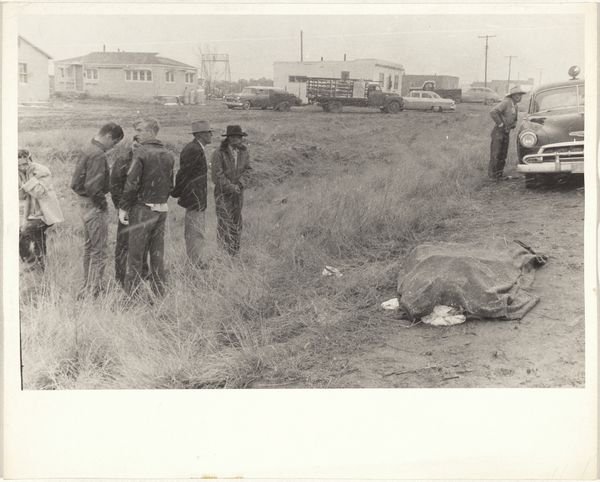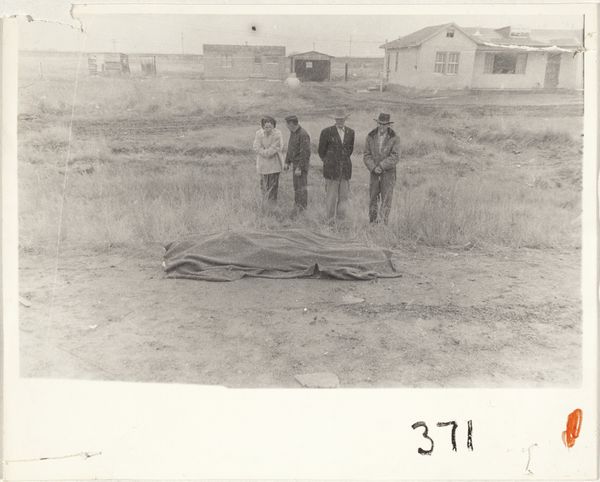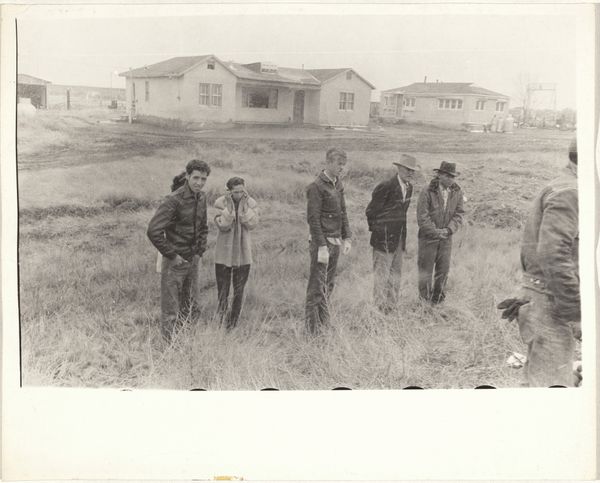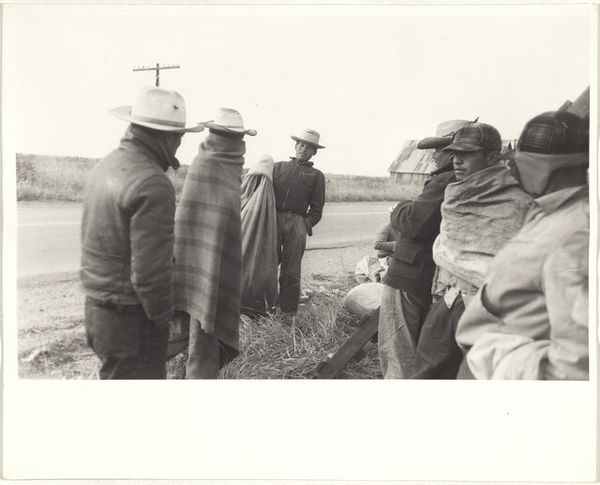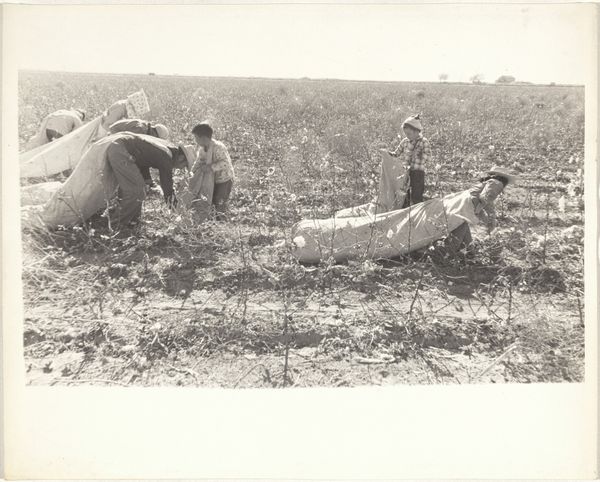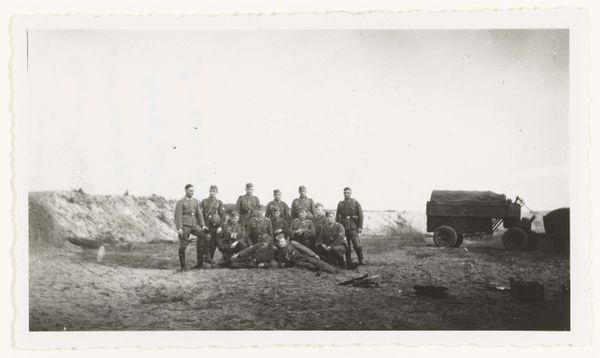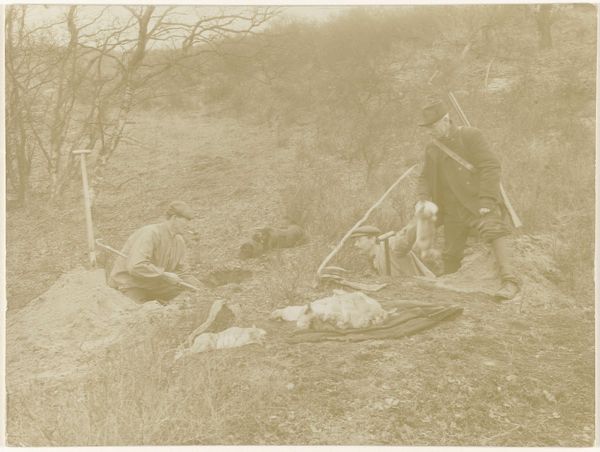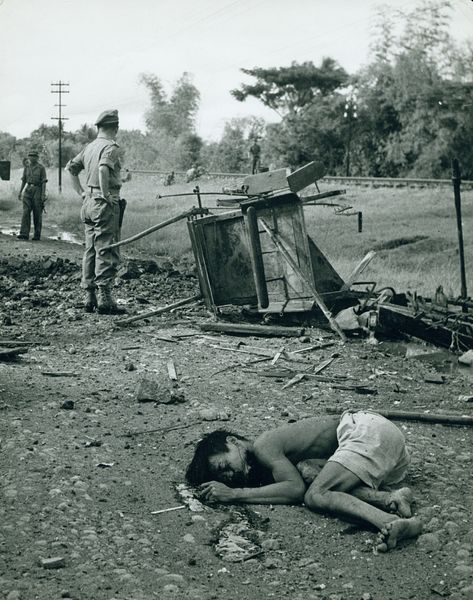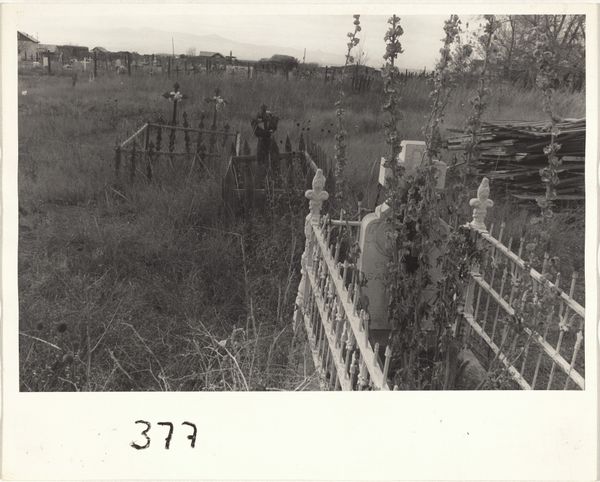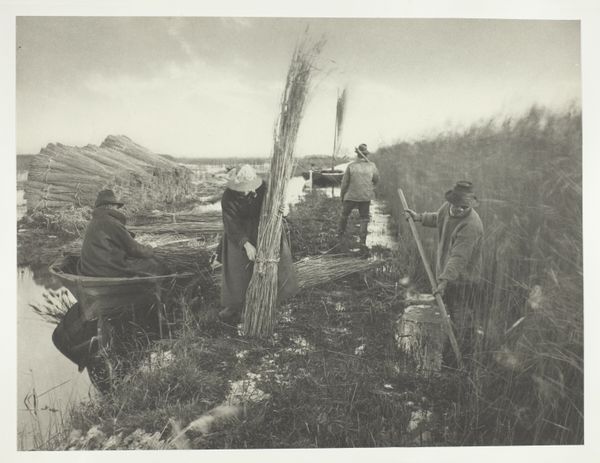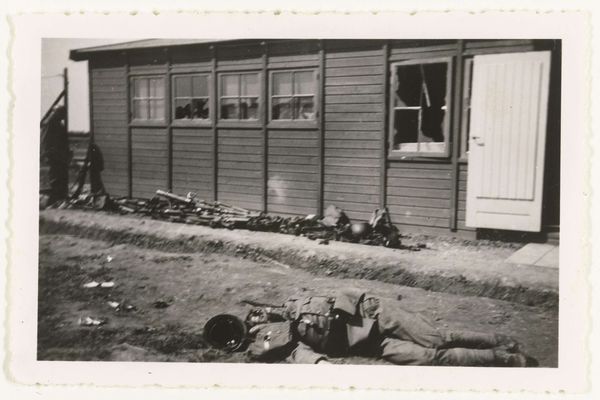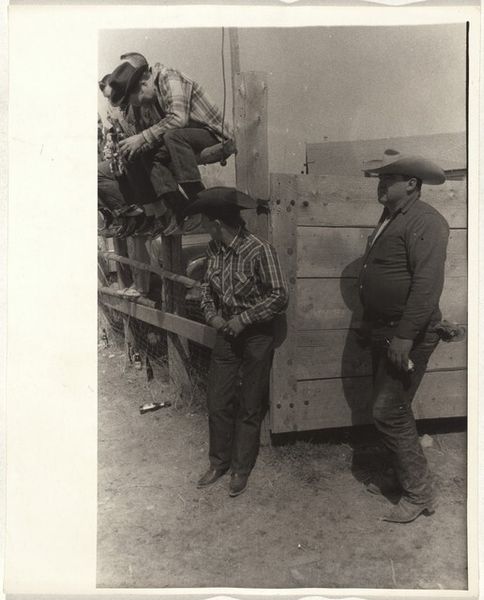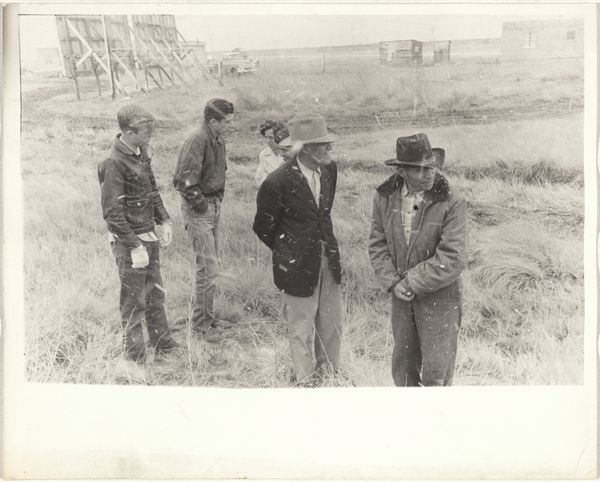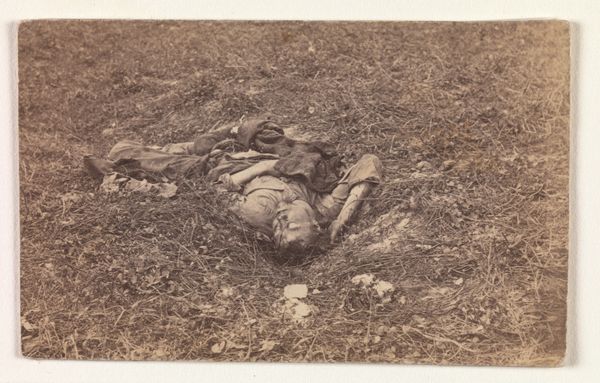
Car accident—U.S. 66 between Winslow and Flagstaff, Arizona 1955
0:00
0:00
print, photography, gelatin-silver-print
# print
#
landscape
#
archive photography
#
street-photography
#
photography
#
historical photography
#
gelatin-silver-print
#
pop-art
#
modernism
#
realism
Dimensions: sheet: 20.3 x 25.3 cm (8 x 9 15/16 in.)
Copyright: National Gallery of Art: CC0 1.0
Editor: So, here we have Robert Frank’s gelatin silver print, "Car accident—U.S. 66 between Winslow and Flagstaff, Arizona," taken in 1955. It’s stark, bleak, and undeniably unsettling. There's a body covered by a blanket in the foreground, and a group of onlookers standing behind. What do you see as you examine this photograph? Curator: Frank's image confronts us with the harsh realities often glossed over in the romanticized narrative of 1950s America. The title explicitly points to U.S. 66, a road laden with symbolism as the "Mother Road," but instead of freedom and opportunity, we are presented with an abrupt disruption, a stark depiction of mortality. Consider how the very act of photographing such a scene transforms it from a personal tragedy into a public spectacle, inviting us to reflect on our relationship with violence and disaster. Editor: That makes me consider the people standing behind the body... who are they? Are they just passersby, or connected to the accident? It feels like we are meant to think about what it means to witness tragedy. Curator: Precisely. This is part of Frank’s genius – he leaves so much ambiguous. It forces us to question our role as viewers, our desire for narratives, for answers that aren't provided. It highlights the voyeuristic element in photography itself, particularly documentary photography. How complicit are we, merely by looking? Think about how this image challenged the established photographic norms of the time, its grainy, unpolished aesthetic signaling a break from traditional photojournalism. Editor: I hadn’t considered that the medium itself could be challenging those established norms! Curator: Photography doesn’t simply reflect reality. It shapes it, interprets it, and can be used to critique societal norms and power structures. What is acceptable to view publicly and privately shapes how we approach photography and trauma today. Editor: I see what you mean. I went in thinking this photo was about one specific accident, but I’m leaving with a deeper consideration for the broader public impact of this single frame. Curator: Exactly, this image is a reminder of art's ability to unsettle and provoke, encouraging critical reflection.
Comments
No comments
Be the first to comment and join the conversation on the ultimate creative platform.
